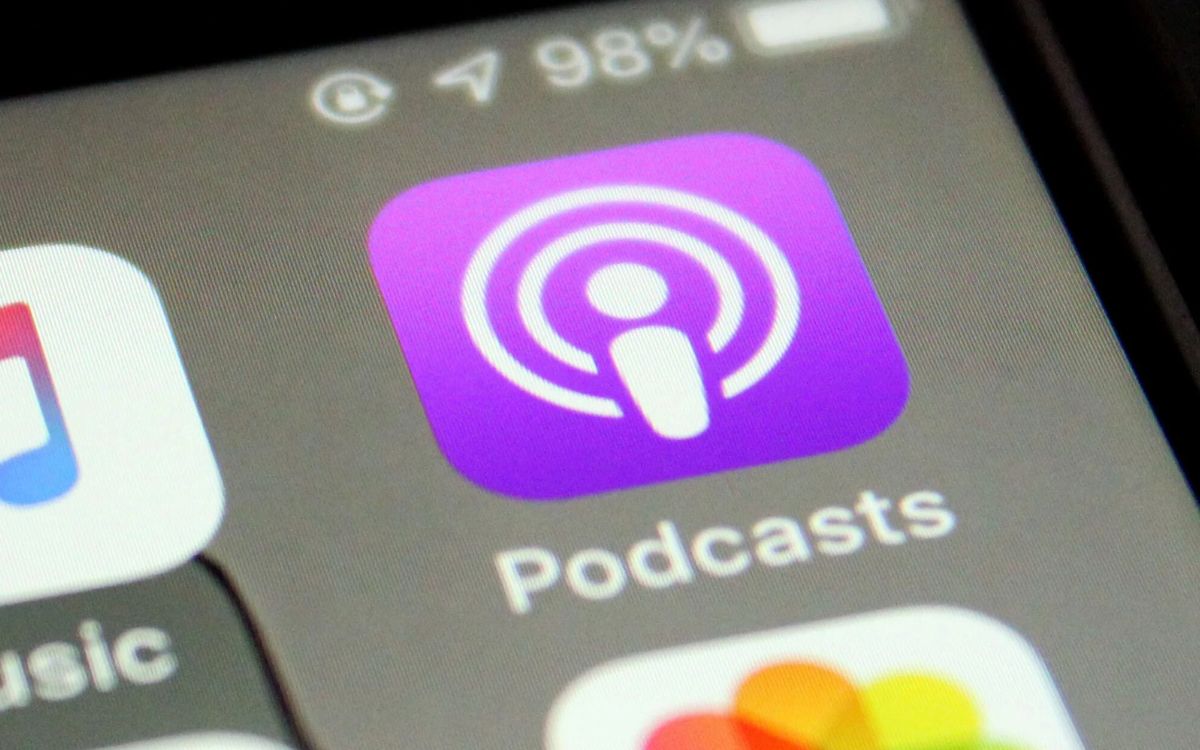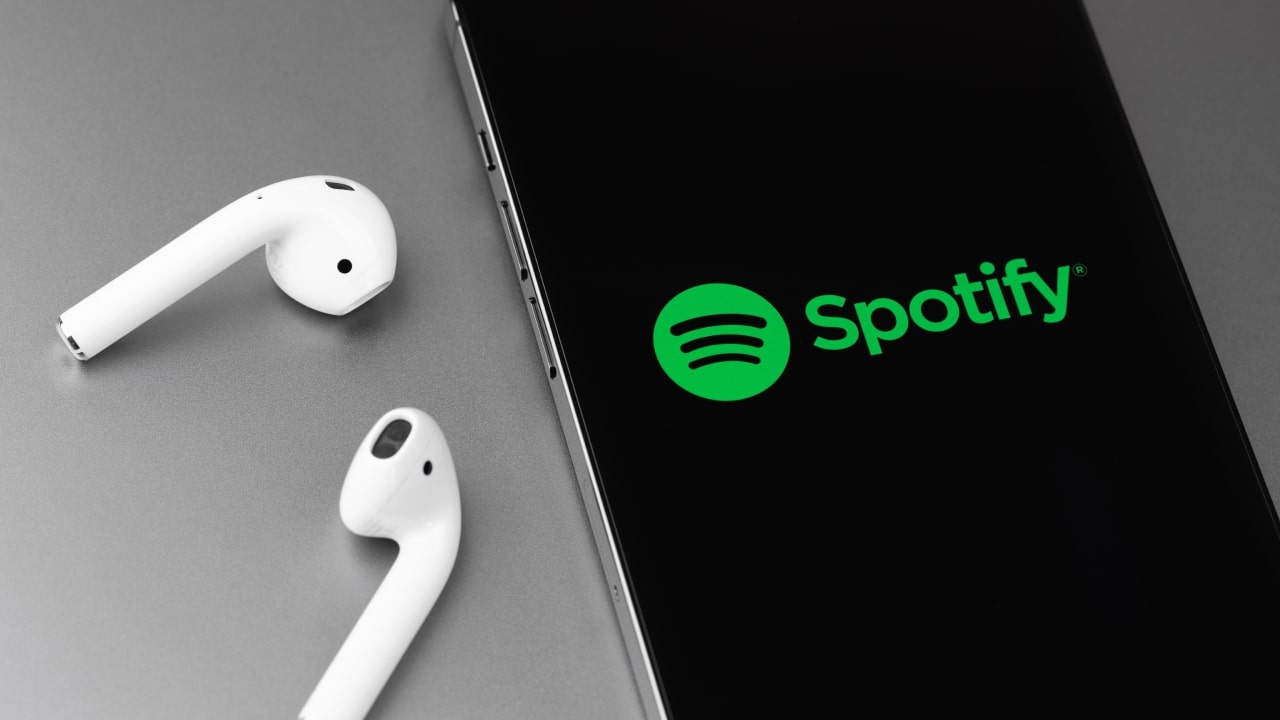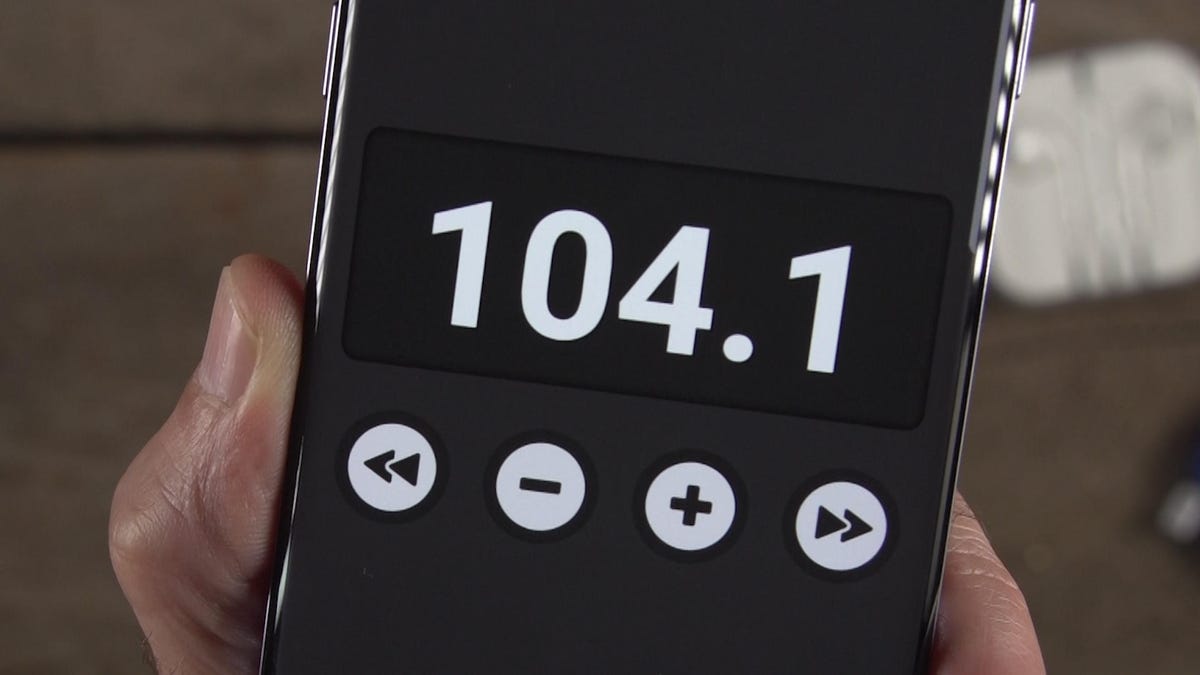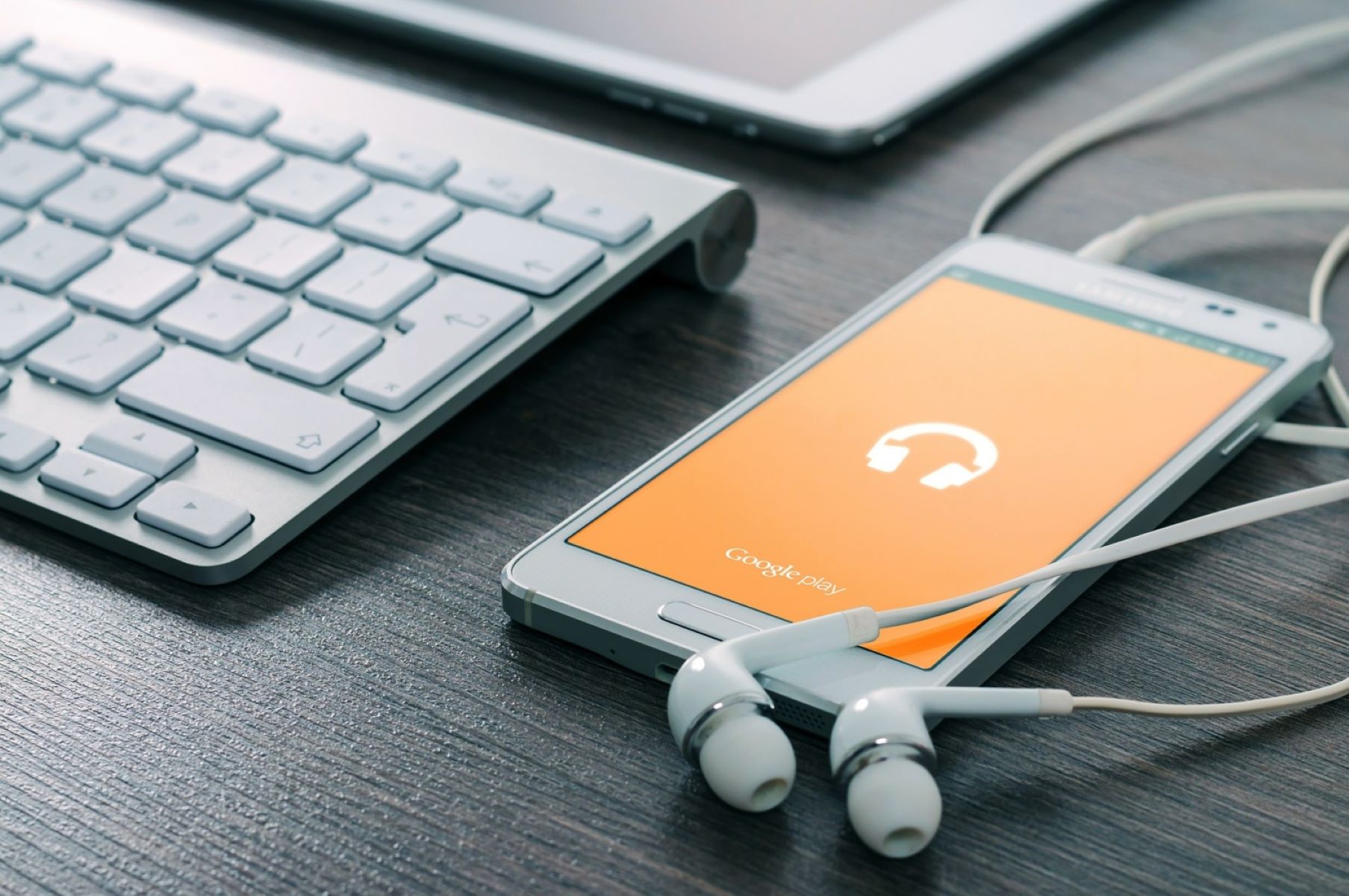Home>Events & Info>Podcast>How Much Data Does A Podcast Use


Podcast
How Much Data Does A Podcast Use
Modified: January 22, 2024
Discover how much data is consumed when listening to podcasts. Find out the approximate usage and optimize your podcast streaming experience.
(Many of the links in this article redirect to a specific reviewed product. Your purchase of these products through affiliate links helps to generate commission for AudioLover.com, at no extra cost. Learn more)
Table of Contents
Introduction
Welcome to the world of podcasts, where you can dive into a vast array of audio content covering topics ranging from true crime to business, education to entertainment. As podcasts continue to gain popularity, it’s essential to understand how much data they consume. After all, in this era of limited data plans and concerns about data usage, it’s important to know how much of your precious data allowance is being used when you indulge in your favorite shows.
Podcasts are audio files that are available for streaming or downloading, providing you with hours of entertainment and knowledge. Whether you’re a podcast addict or a newbie, understanding podcast data usage can help you manage your data consumption effectively and avoid unexpected charges.
In this article, we will explore the factors that affect podcast data usage, including audio quality, file formats, episode length, and whether you’re streaming or downloading. We will also take a closer look at some popular podcast apps and their data usage. By the end, you’ll have a comprehensive understanding of podcast data consumption and some tips on managing it without compromising your podcast-listening experience.
Understanding podcast data usage
When it comes to understanding podcast data usage, it’s important to know that the amount of data consumed can vary depending on several factors. Here are some key points to consider:
- Audio quality: The audio quality of a podcast episode can greatly impact its data usage. Higher-quality audio files require more data to transmit, resulting in increased data usage. On the other hand, lower-quality audio files may use less data but may compromise the overall listening experience. It’s important to find a balance between audio quality and data consumption.
- File format: The file format of a podcast episode can affect data usage as well. Common file formats for podcasts include MP3, AAC, and WAV. MP3 files are widely used and offer a good balance between audio quality and file size. AAC files, on the other hand, provide better audio quality but may consume more data. WAV files are uncompressed and offer the best audio quality, but they can be quite large in size and therefore use more data. Consider the file format when managing your data usage.
- Episode length: The length of a podcast episode plays a significant role in data consumption. Longer episodes naturally consume more data than shorter ones. If you’re conscious of your data usage, consider opting for podcasts with shorter episodes or manage your listening time to avoid excessive data consumption.
It’s worth noting that the actual data usage for streaming a podcast episode can vary depending on the podcast app or platform you’re using. Some apps may compress the audio files or provide options to adjust the streaming quality, which can help reduce data usage while still providing a satisfactory listening experience.
Understanding these factors can help you make more informed decisions when it comes to managing your data usage while enjoying your favorite podcasts. In the next sections, we will delve deeper into the specific aspects that affect podcast data consumption, such as audio quality, file formats, episode length, and the difference between streaming and downloading.
Factors affecting podcast data usage
Several factors can impact the amount of data consumed when listening to podcasts. By understanding these factors, you can make informed choices to manage your data usage effectively. Let’s explore some of the key factors:
- Audio quality: The audio quality of a podcast episode can significantly influence the data usage. Higher quality audio requires more data to transmit, while lower quality audio consumes less data. Most podcasts are encoded at a standard audio quality, providing a good balance between data consumption and audio experience. However, some podcasts may offer higher quality audio options, which can result in increased data usage.
- File format: Different file formats, such as MP3, AAC, and WAV, have varying data requirements. MP3 files are commonly used for podcasts due to their ability to deliver a good balance between audio quality and file size. AAC files offer better audio quality but may require more data. WAV files provide the best audio quality but are larger in size and can consume more data. When choosing podcasts to listen to, consider the file format and its impact on data usage.
- Episode length: The length of a podcast episode directly affects data usage. Longer episodes require more data to download or stream compared to shorter ones. Before starting a podcast episode, take note of its length and consider the available data in your plan. If you have limited data or want to reduce data consumption, opting for podcasts with shorter episodes can help manage your usage effectively.
- Streaming vs. downloading: The method you choose to listen to podcasts can also impact data usage. Streaming podcasts require a constant internet connection and continuously use data while you listen. On the other hand, downloading episodes in advance allows you to listen offline without using additional data. If you have access to Wi-Fi, downloading podcasts beforehand can be an effective way to control data usage and enjoy your favorite shows without worrying about exceeding your data limit.
It’s important to note that data usage can vary between podcast platforms and applications. Some platforms may compress audio files or provide options to adjust streaming quality, enabling you to reduce data consumption without compromising the listening experience. Exploring these settings within your chosen podcast app can help you tailor your data usage according to your preferences and available data plan.
By considering factors such as audio quality, file format, episode length, and streaming or downloading options, you can make conscious choices that allow you to enjoy podcasts while effectively managing your data usage.
Audio quality and file format
When it comes to podcast data usage, the audio quality and file format of an episode play a significant role. Let’s take a closer look at how these factors affect data consumption:
Audio quality: The audio quality of a podcast episode refers to the clarity and fidelity of the sound. Higher audio quality results in a more immersive and enjoyable listening experience. However, higher-quality audio files tend to be larger in size, requiring more data to transmit. Podcasts typically use a standard audio quality that strikes a good balance between audio experience and data consumption. While some podcasts offer higher-quality options for audiophiles, it’s important to keep in mind that choosing higher-quality audio will consume more data.
File format: Podcast episodes are usually available in different file formats, such as MP3, AAC, and WAV. The choice of file format affects both the audio quality and the data usage. MP3 files are the most commonly used format for podcasts due to their ability to deliver a good balance between audio quality and file size. They are widely supported and offer efficient compression, resulting in smaller file sizes and lower data usage without significant loss in audio quality. AAC files provide better audio quality, but they may require more data due to their higher bit rate. WAV files, being uncompressed, offer the best audio quality but are much larger in size and therefore consume more data. When choosing which podcast files to download or stream, consider the trade-off between audio quality and data usage.
To manage your data usage without compromising too much on audio quality, you can opt for podcasts with standard audio settings encoded in common formats like MP3. This way, you can enjoy your favorite shows while minimizing your data consumption. However, if you have a generous data plan and prioritize audio quality, you can choose podcasts with higher-quality audio options or files in formats like AAC.
It’s also worth mentioning that some podcast apps or platforms may provide options to adjust the streaming or downloading quality, allowing you to further control your data usage. By selecting a lower streaming quality or downloading lower quality files, you can reduce data consumption while still enjoying your podcasts. Consider exploring the settings within your chosen podcast app to find the right balance between audio quality and data usage that suits your preferences and data plan.
By considering both the audio quality and file format when choosing podcasts to listen to, you can make informed decisions that allow you to balance your data consumption while still enjoying a satisfactory audio experience.
Podcast episode length
The length of a podcast episode is another important factor to consider when it comes to data usage. The duration of an episode not only determines the amount of time you’ll spend listening but also directly impacts the amount of data you’ll consume. Here’s a closer look at how episode length affects data usage:
Longer episodes: Podcast episodes can range anywhere from a few minutes to several hours in length. Naturally, longer episodes require more data to download or stream compared to shorter ones. If you have a limited data plan or want to manage your data consumption more efficiently, opting for podcasts with shorter episodes can be advantageous. With shorter episodes, you can enjoy a variety of content without consuming excessive data.
Shorter episodes: On the flip side, shorter podcast episodes offer the benefit of reduced data usage. If you find yourself frequently hitting your data limit or want to conserve your data for other activities, choosing podcasts with shorter episodes can help you enjoy your favorite shows without worrying about excessive data consumption.
It’s worth noting that the total data usage of a podcast episode will depend on the file size, which can vary based on factors such as audio quality and file format. However, the episode length is a good indicator of the overall data consumption you can expect. For instance, a shorter episode of 30 minutes may consume significantly less data compared to a longer episode of 2 hours, even if both episodes are encoded at the same audio quality and file format.
When deciding which podcasts to listen to, take into account your data plan and personal preferences. If managing data usage is a priority for you, consider opting for podcasts with shorter episodes or dividing longer episodes into multiple listening sessions to spread out the data consumption.
Additionally, some podcast apps allow you to adjust the playback speed of episodes, allowing you to listen to content at a faster pace while reducing the overall listening time and data usage. This feature can be particularly useful for longer episodes, as it enables you to consume the content more efficiently without compromising comprehension. Keep in mind, though, that increasing the playback speed may affect the overall listening experience, so find a speed that suits your preferences.
By being mindful of the episode length and its impact on data consumption, you can better manage your data usage while still enjoying a wide variety of podcast content.
Downloading vs. streaming
When it comes to listening to podcasts, you have two primary options: downloading episodes or streaming them. Each method has its pros and cons when it comes to data usage. Let’s explore the differences between downloading and streaming:
Downloading: When you download a podcast episode, it means you’re saving the audio file onto your device for offline listening. This method allows you to listen to the episode without an internet connection, which can be helpful if you’re in an area with limited or no internet access. When you download episodes in advance, you are essentially using your data to download them once, and thereafter you can listen to them multiple times without any additional data usage. This makes downloading an ideal option for those who want to conserve data or have a limited data plan.
Streaming: On the other hand, streaming a podcast episode means you’re listening to it in real-time without downloading the file. This requires a consistent internet connection as the audio file is being streamed directly from the podcast server to your device. While streaming offers the advantage of immediate access to the latest episodes and saves storage space on your device, it does consume data with each play. The amount of data used during streaming can vary based on factors such as the audio quality, file format, and length of the episode.
Whether you should download or stream podcasts depends on your specific circumstances and preferences. If you have a limited data plan or are concerned about data usage, downloading episodes while connected to Wi-Fi can be a more data-friendly option. This way, you can enjoy your favorite episodes offline without using additional data.
However, if you have an unlimited data plan or access to a reliable and high-speed internet connection, streaming can be a convenient choice. It allows you to discover and listen to new episodes without the need for downloading and managing storage on your device. Streaming is also beneficial if you prefer to listen to podcasts on the go without having to plan ahead and download episodes in advance.
When using streaming as your preferred method, keep in mind that some podcast apps offer options to adjust the streaming quality. Lowering the streaming quality can help reduce data consumption, although it may result in a slight compromise in audio quality. Additionally, be cautious about streaming podcasts while on a cellular network, as it can quickly consume a significant amount of data. If possible, connect to Wi-Fi when streaming to avoid unexpected data usage.
Ultimately, the choice between downloading and streaming depends on your personal preferences, data plan limitations, and the availability of an internet connection. Assess your needs and priorities to determine the best approach that suits your data consumption habits and listening preferences.
Popular podcast apps and their data usage
When it comes to listening to podcasts, there are numerous apps available for you to choose from. Each app offers its own features and settings, including options to adjust data usage. Here’s a look at some popular podcast apps and their data usage:
1. Apple Podcasts: As the default podcast app on Apple devices, Apple Podcasts provides a seamless and user-friendly experience. The app allows you to download episodes for offline listening, which can help conserve your data. Additionally, Apple Podcasts allows you to stream episodes at different quality levels, ranging from low to high. By adjusting the streaming quality setting, you can easily manage your data consumption while enjoying your favorite shows.
2. Spotify: Known for its extensive music library, Spotify also offers a vast collection of podcasts. While Spotify’s data usage may vary depending on the audio quality settings, it generally uses less data compared to some other streaming platforms. Spotify utilizes audio file compression techniques, optimizing the file size without compromising the audio quality. This results in efficient data consumption for both streaming and downloading podcasts.
3. Google Podcasts: Google Podcasts is another popular app that provides a simple and intuitive podcast listening experience. The app allows you to download episodes for offline listening, helping you save data when you’re on the go. While the app does not offer explicit settings to adjust the streaming quality, it optimizes data usage by leveraging Google’s server infrastructure to minimize the amount of data transferred during playback.
4. Stitcher: Stitcher is a comprehensive podcast platform that offers both free and premium features. The app allows you to download episodes for offline listening, reducing your data consumption. Stitcher also provides an option to adjust the streaming quality to manage data usage. By selecting a lower quality setting, you can conserve data while still enjoying your favorite podcasts.
5. Overcast: Overcast is a popular podcast app known for its robust features and user-friendly interface. The app allows you to download episodes and adjust the streaming quality to suit your data preferences. Overcast also offers a Smart Speed feature, which dynamically shortens silences in episodes, reducing the overall listening time and data consumption without affecting the content.
It’s important to note that the actual data usage of these apps can vary based on factors such as the audio quality and file format of the podcasts you listen to. Additionally, your data usage may also depend on other factors like your internet connection and any background processes running on your device. It’s a good practice to keep an eye on your data usage statistics within the app or consult your device’s data management tools to monitor and manage your podcast-related data consumption.
Remember to explore the settings within your chosen podcast app to adjust options such as streaming quality and downloading preferences. By optimizing the settings to align with your data plan and preferences, you can effectively manage your data usage while enjoying your favorite podcasts.
Managing podcast data usage
As podcast enthusiasts, it’s important to strike a balance between enjoying your favorite shows and managing your data usage effectively. Here are some tips to help you manage your podcast data consumption:
- Download episodes on Wi-Fi: If you have access to a Wi-Fi connection, consider downloading podcast episodes in advance. This allows you to enjoy your favorite shows offline without using additional data. Make it a habit to download episodes while connected to Wi-Fi, especially if you’re on a limited data plan.
- Choose lower quality or compressed files: High-quality audio files may enhance the listening experience, but they also consume more data. Consider choosing lower quality or compressed files, such as MP3s, which strike a balance between audio quality and data consumption. Many podcast apps provide options to adjust the streaming quality, allowing you to reduce data usage without significant audio degradation.
- Keep an eye on your data usage: Monitor your data usage by checking your device’s data management tools or the settings within your podcast app. Regularly reviewing your data usage can help you stay within your data plan limits and identify any excessive consumption. If you notice unexpected data usage, investigate which apps or episodes may be the culprits.
- Take advantage of data-saving features: Explore the features offered by your chosen podcast app to reduce data usage. Look for options like downloading episodes on a schedule, automatically deleting played episodes, or enabling data-saving mode. These features help you minimize data consumption without sacrificing your listening experience.
- Consider episode length: Longer podcast episodes naturally consume more data. If data usage is a concern for you, consider opting for podcasts with shorter episodes. This allows you to enjoy a variety of content while keeping your data usage in check.
- Limit streaming on cellular data: While streaming podcasts can be convenient, it can quickly eat up your cellular data. Whenever possible, stream podcasts while connected to Wi-Fi to avoid unexpected data charges. If you must stream on cellular data, monitor your usage closely and consider lowering the streaming quality to minimize data consumption.
By implementing these techniques and being mindful of your data consumption, you can make the most of your podcast listening experience without exceeding your data limits.
Remember, managing your data usage is crucial in today’s world where data plans can be limited and costly. By implementing these strategies and using data-saving features, you can enjoy your favorite podcasts while minimizing your data consumption and avoiding any unpleasant surprises on your monthly bill.
Conclusion
Podcasts have become a beloved form of entertainment and education for millions of people worldwide. However, it’s important to be mindful of the data usage associated with podcast consumption, especially if you have limited data plans or concerns about data consumption. By understanding the factors that affect podcast data usage and implementing strategies to manage it effectively, you can enjoy your favorite shows without worrying about exceeding your data limits or incurring extra charges.
Key factors that influence podcast data usage include the audio quality and file format of episodes, the length of the episodes, and whether you choose to download or stream them. Higher audio quality and larger file formats consume more data, while longer episodes naturally require more data compared to shorter ones. Downloading episodes allows for offline listening without using additional data, while streaming on-the-go can quickly consume your cellular data.
Popular podcast apps like Apple Podcasts, Spotify, Google Podcasts, Stitcher, and Overcast offer various features to help manage data usage, such as adjusting streaming quality, downloading episodes, and utilizing data-saving modes. It’s important to explore the settings within your chosen app and take advantage of these features to optimize your data consumption.
By following best practices, such as downloading episodes on Wi-Fi, choosing lower quality or compressed files, monitoring your data usage, and being mindful of episode length, you can strike a balance between enjoying your favorite podcasts and managing your data effectively.
Remember, different podcast apps and platforms may have their own data usage patterns and settings, so it’s a good idea to familiarize yourself with the specifics of your chosen app to make informed decisions about your data consumption.
In conclusion, podcasts are a wonderful source of entertainment and knowledge, but it’s crucial to be aware of their data usage. By understanding and implementing the strategies discussed in this article, you can enjoy the world of podcasts while effectively managing your data usage. So go ahead, listen to your favorite shows, expand your horizons, and let the podcasts transport you to exciting new worlds—all without worrying about your data consumption!











